Blackburn Meadows STW (2024)
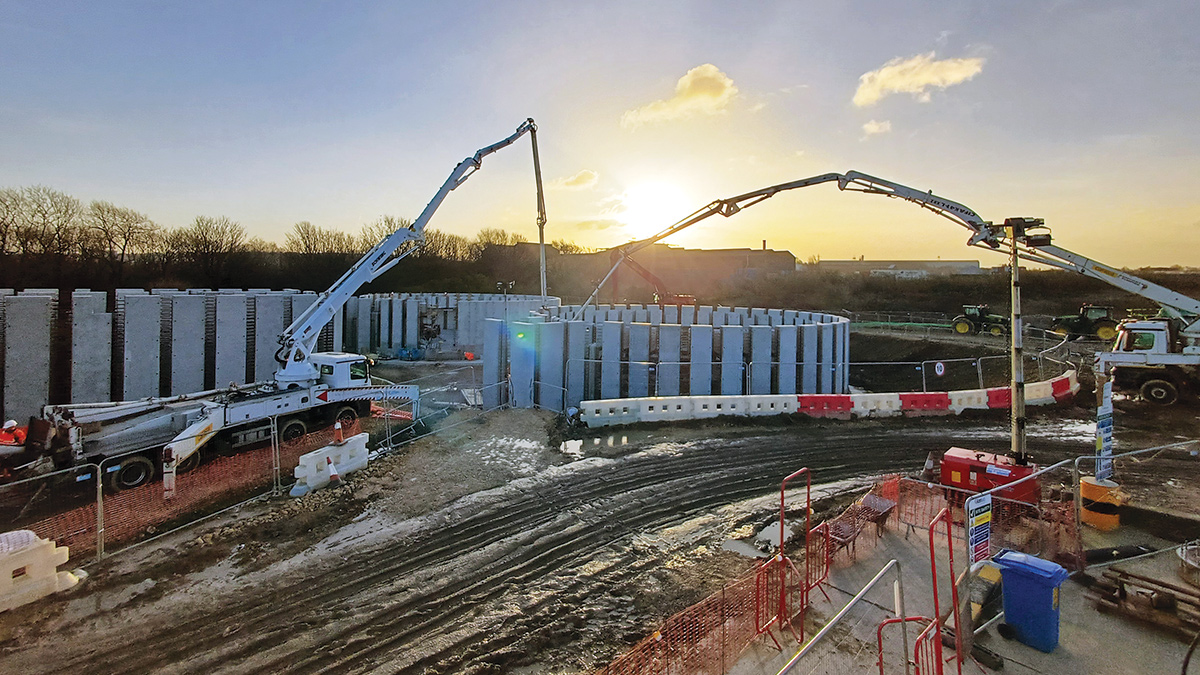
Clarifier and CoMag® tank precast installation - Courtesy of Glanua
Yorkshire Water’s Blackburn Meadows STW is a large sewage treatment works located approximately 6 km to the north-east of Sheffield, adjacent to the M1 motorway, which treats on average 4,000 l/s. The Environment Agency has applied new consent permits at Blackburn Meadows, reducing the allowable concentrations of phosphorus and iron discharged to the environment in its final effluent by 22 December 2024. Under the AMP8 WINEP Programme, Glanua Group was awarded a contract to design and construct a new tertiary solids removal (TSR) plant consisting of breaking into the existing final effluent culvert then building a pumping station to pump the effluent through concrete distribution and reactor tanks and circular clarifiers.
Introduction
The Blackburn Meadows project stands out as a significant advancement in wastewater treatment technology and environmental protection by addressing key environmental concerns and implementing innovative and sustainable solutions.
With a contract value of £36.2m, the new TSR plant is a substantial investment in Yorkshire Water’s wastewater treatment infrastructure, and for the City of Sheffield. This will significantly improve the quality of the final effluent discharged into the River Don and provide long-term environmental, operational and economic benefits to the region.
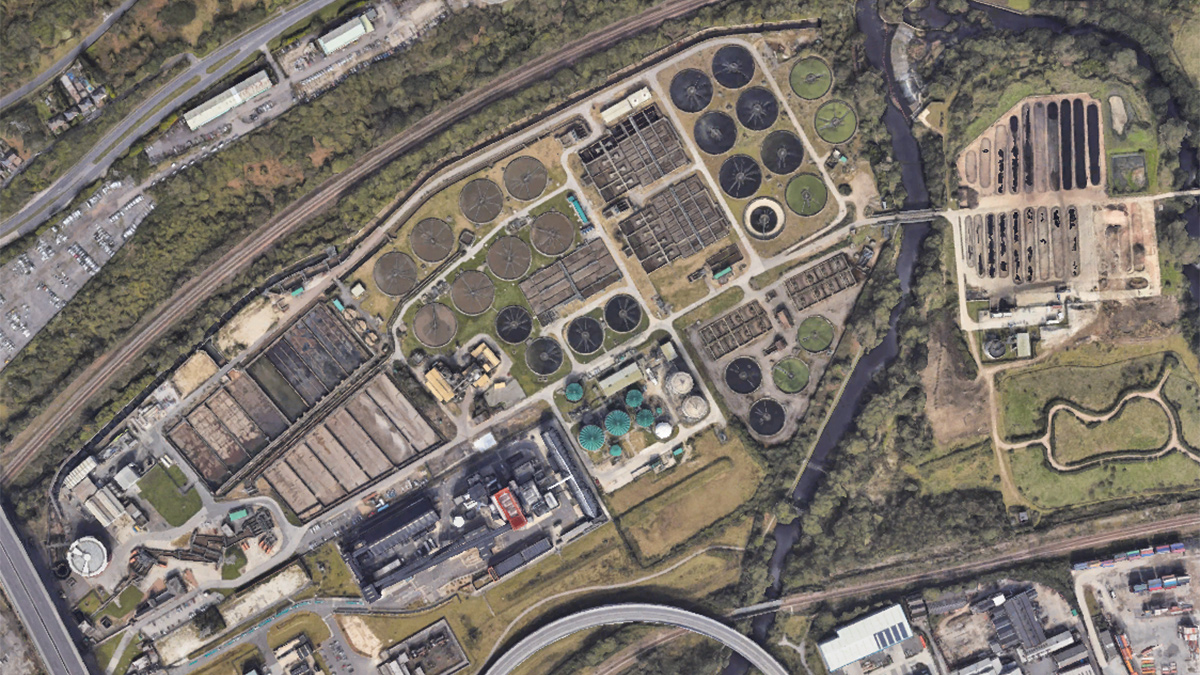
Overview of Blackburn Meadows STW – Google Maps
Existing works
A raised inlet works is fed from a raw sewage screw pumping station which receives flows from off-site pumping stations. The inlet works consists of coarse screens, grit removal and final screening along with screenings handling plants.
Primary treatment is provided by eight circular primary settlement tanks along with associated de-sludging and scum removal provision. Biological treatment is provided by four activated sludge plants (ASP); hybrid ASP1, hybrid ASP2/ASP3 and Simplex ASP.
The ASPs include return activated sludge (RAS) and surplus activated sludge (SAS) streams.
Flow splits are achieved downstream of the PSTs via flume flow control. The Simplex ASP is fed from a separate pumping station and Hybrid ASP1/ASP2 and ASP3 are fed from a separate screw pumping station.
Each set of ASPs has its own directly connected final settlement tanks (FST) with each bank of ASPs feeding four FSTs. FST effluent combines to a final effluent pumping station, which pumps final effluent via a syphon chamber under the River Don via twin brick culverts to the River Don to the far east of the site.
Additionally on site is a sludge treatment facility (STF) consisting of sludge balancing, sludge drum thickeners, a sludge digestion plant, biogas holder and CHP and digested sludge centrifuge plant.
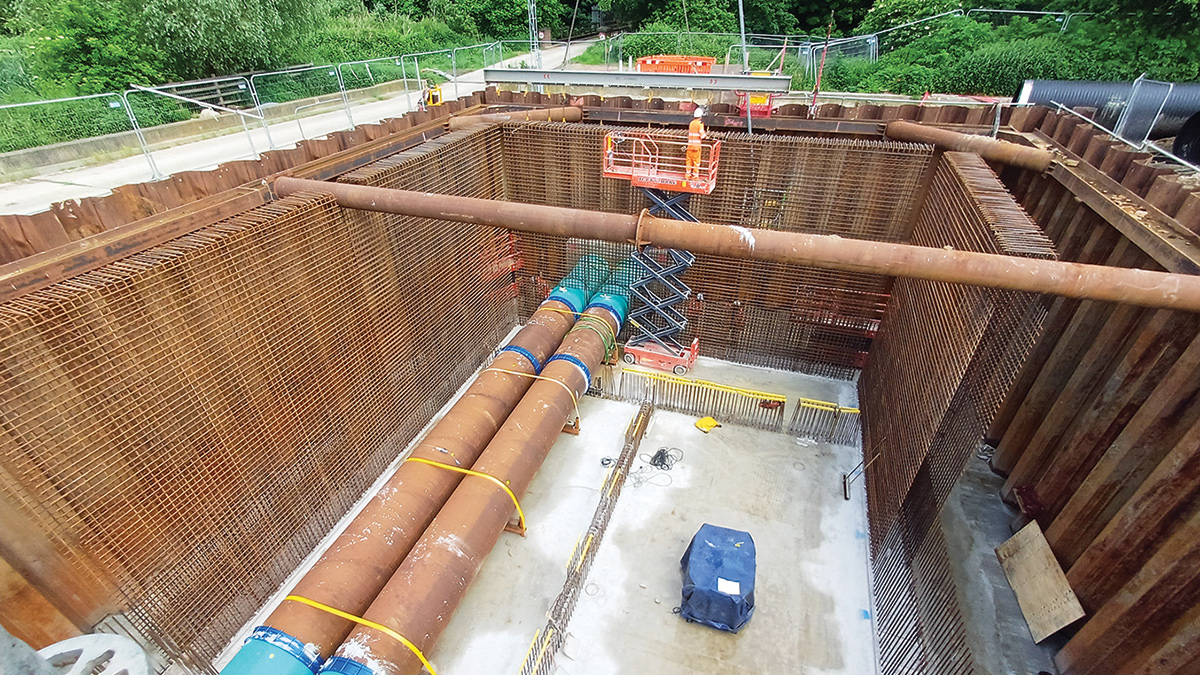
TSR pumping station rebar structure and flume pipe tie-in – Courtesy of Glanua Group
Scope of works
The scope of the main Blackburn Meadows STW contract is for the design and construction of a tertiary solids removal plant in order to improve the quality of the final effluent discharged to the River Don.
The upgrade works includes five TSR feed pumps lifting current final effluent into a distribution chamber. This splits the effluent into two streams and is dosed with ferric sulphate upstream of the CoMag® plant from Evoqua Water Technologies (now Xylem Water Solutions). Magnetite and polymer are dosed and mixed in the CoMag® plant before being moved forward for clarification. The process reuses 99% of the injected magnetite, offering a sustainable process for lower OPEX.
The upgrade works includes sludge management and dirty backwash pumping facilities to return process waste to the head of the works.
The scheme also includes the design and construction of a second ferric sulphate dosing system integrated into the secondary treatment process to help effect the quality of the final effluent prior to being treated by the TSR plant.
To facilitate construction and to allow for the integration of the TSR plant into the existing process, the project also includes complex temporary works pumping system to divert treated flows. This was completed under Environment Agency guidance to allow for the plant to be tied into the existing twin 1400mm diameter Victorian culverts which fed compliant effluent to the River Don through the existing process, and will continue to when the TSR plant is commissioned and bought online.
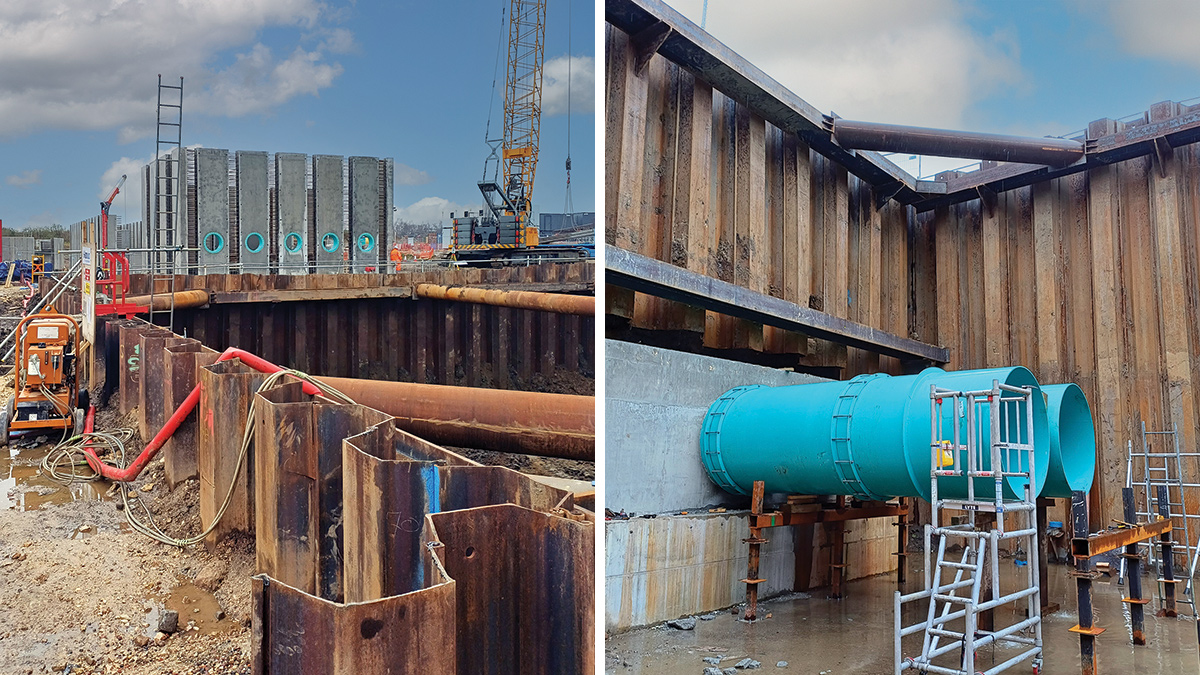
(left) TSR pumping station temporary works and distribution chamber precast installation and (right) TSR pumping station/Victorian culvert tie-in – Courtesy of Glanua Group
Tertiary solids removal (TSR) process
The CoMag® system is a ballasted separation and recovery process; utilising magnetite and other coagulants to create a ballasted flocculation system and enhance settling rates and increasing the performance of wastewater and water treatment operations. The high-density, magnetite-ballasted floc flows into a modified compact high-rate clarifier. The clarifier includes baffle plates to direct flow for optimal settling, and a sludge rake collects sludge in a sump.
The CoMag® system employs a sludge recycling function to increase the system performance and the clarity of its effluent. Approximately 80% of the clarifier underflow is recirculated back to the system’s reaction tank. In the recirculation loop, sludge is processed through an inline, high-speed shear mixer where the magnetite is separated from the floc. The resulting two-part slurry is then passed under a magnetic recovery drum. The permanent and stationary magnets inside the drum help to capture more than 99% of the magnetite and return it to the system. The sheared sludge, minus the magnetite, is sent for sludge dewatering.
Blackburn Meadows STW: Supply chain – key participants
- Principal designer/contractor: Glanua Group
- Outline design: Stantec UK
- Design assistance & hazard study facilitators: MEP
- DfMA solutions: Glanua Industrial
- Civils design: AtkinsRéalis
- CoMag® technology: Evoqua Water Technologies (now Xylem Water Solutions)
- Overpumping temporary works: Selwood
- Piling: Aarsleff Ground Engineering
- Civils contractor & temporary works: Hernons ME
- Civils contractor: M Cooper Civils
- Civils contractor: Indepth Civil Engineering Services Ltd
- Temporary works, manholes & trench boxes: MGF Ltd
- Mechanical installation: Powerrun Pipe-Mech Ltd
- Electrical installation: Main Electrical Ltd
- Precast concrete tanks: FLI Precast Solutions
- MCCs & systems integration: CEMA Group
- Transformers & HV works: Integrated Utility Services
- MCC kiosks: Quinshield Ltd
- Pipework: Scott Parnell Ltd
- Pipework: Electrosteel Castings (UK) Ltd
- Pipework: Freeflow Pipesystems
- Pipework: Franklyn Yates Engineering Ltd
- Chemical dosing: NPS Engineering Group
- Pumps: Xylem Water Solutions
- GRP access: Relinea
- Access metalwork: FES Limited
- Valves: Cotswold Valves Ltd
- Penstocks: Glenfield Invicta
- Static mixers: Statiflo International
- Flow meters & instrumentation: ABB Group
- Instrumentation: Endress+Hauser
- Instrumentation: Hach Lange
- Instrumentation: Siemens
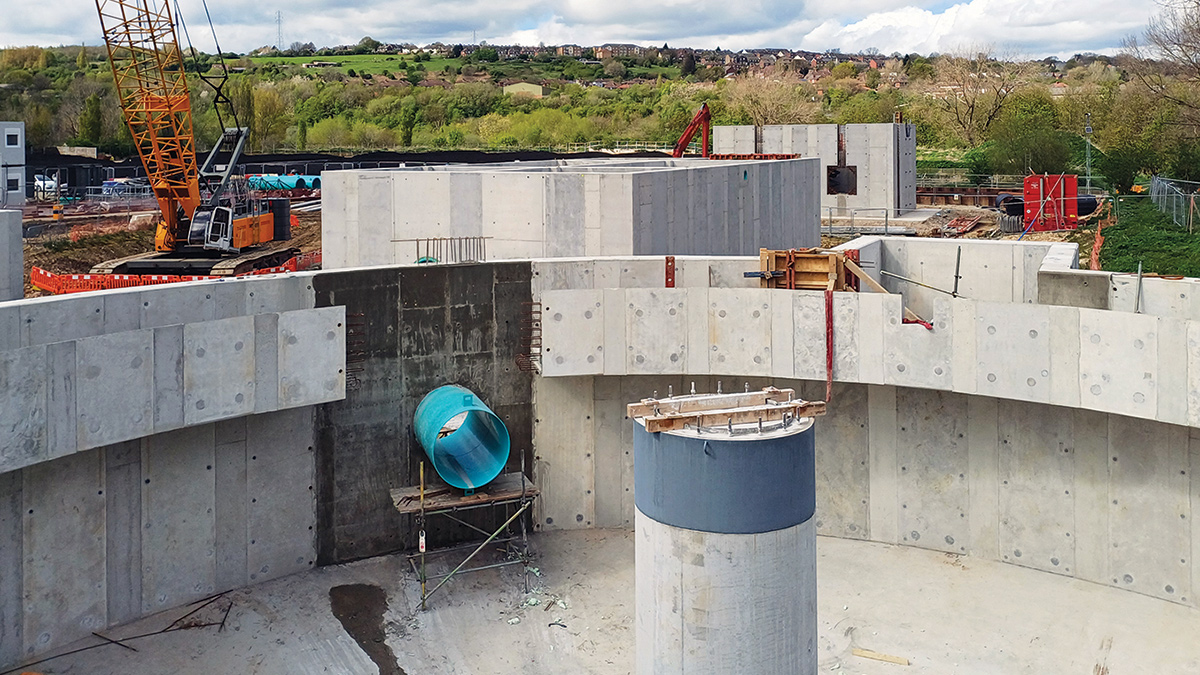
Clarifier inlet pipe tie-in – Courtesy of Glanua Group
Construction progress
At the time of writing, July 2024, the construction of the TSR is progressing well and in line with the programme.
- All precast structures have been installed and water-tested; this equated to 187 panels and associated stitching. Following an intricate over-pumping operation taking place over a number of weeks, the TSR pumping station has been tied into the existing Victorian culverts.
- The pumping station was constructed using a more traditional in situ concrete design, has all primary structural walls cast, and continues to progress at a healthy rate.
- As part of the initial mechanical installation, the clarifiers have both had their scraper bridges installed under the supervision of Evoqua Water Technologies as part of the CoMag® process solution.
- The primary MCC civil base structure has been cast and offers a substantial area for the plethora of cables required for a site of this size, which feed into the bottom entry MCC panel design.
- Construction of the polymer plant civil works has generated the need for a significant change in our traffic management plan for the site.
- All key civil, mechanical and electrical procurement packages were awarded at the earliest opportunity to allow the installation to progress in line with the programme.
- As the major civil structures continue to progress, general preparations are being made to undertake the installation of the underground process pipework, drainage and associated network of manholes as well as the substantial number of electrical and chemical ducts and drawpits.
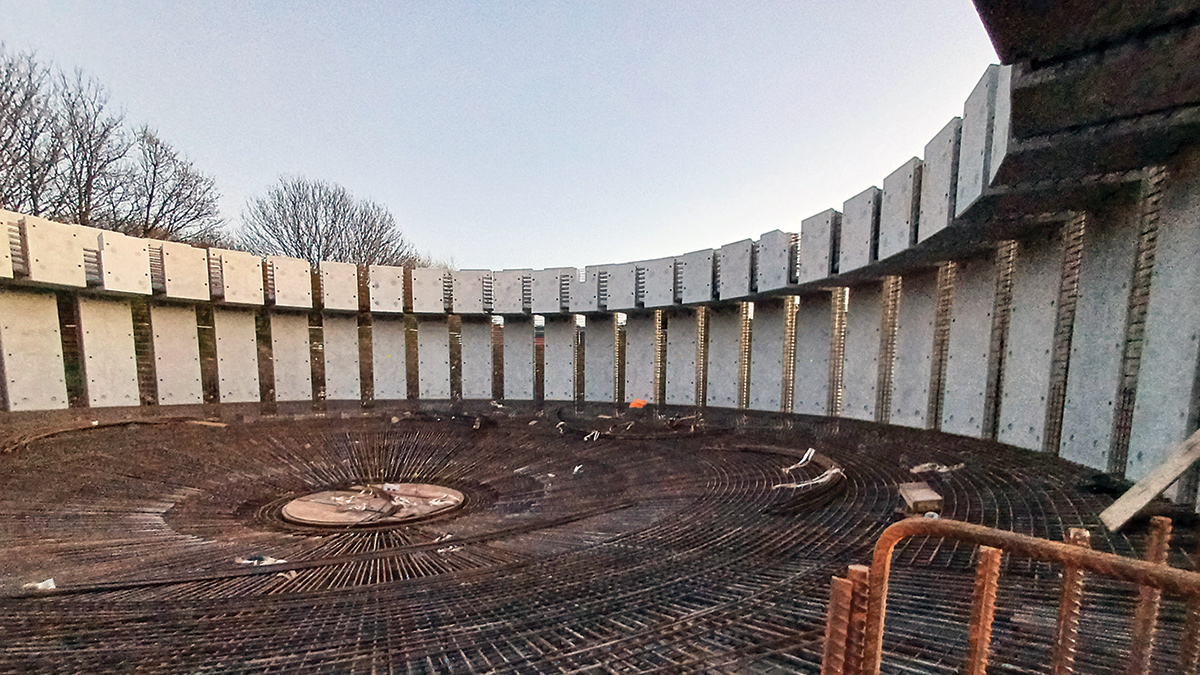
Clarifier precast structure installation and conical base reinforcement – Courtesy of Glanua Group
Digital delivery
The Primary Common Data Environment (CDE) and information delivery platform used for the Blackburn Meadows is Autodesk’s BIM360 software. Utilising this, Glanua Group has been able to control the flow and dispersal of information throughout the project and delivery teams, enabling the information management workflow process and review to align with the ISO 9001 quality management process.
The information management platform allows Glanua Group to control how and when the various project teams see and receive information ensuring the right information is delivered in the most efficient and effective way. This collaborative approach has ensured the right information is received at the right time.
Multiple digital tools were utilised to facilitate the safe design and construction process; this included the Autodesk Revit suite for the civil structures and all mechanical/electrical equipment, which was all modelled in 3D with subsequent sheets produced to facilitate a review and approval process as well as provide construction coordination, assessment, and as-built markups as required.
Glanua Group utilised reality capture technology to establish baseline data and to monitor progress against this, a 4D model was produced using Bentley Syncro software to monitor progress and to help look for efficiencies in the programme.
Through the asset function of BIM360, Glanua Group was able to replicate the client’s asset data requirements to collate data prior to submission on to their Asset Management database. Within this function the procurement and construction/installation status could be tracked, whilst assigning supplier and design information in preparation for the O&M and H&S file information.
As the project progresses, Glanua Group is able to attribute relevant commissioning checklists to specific assets, enabling the commissioning teams to access and share commissioning data direct with the project team.
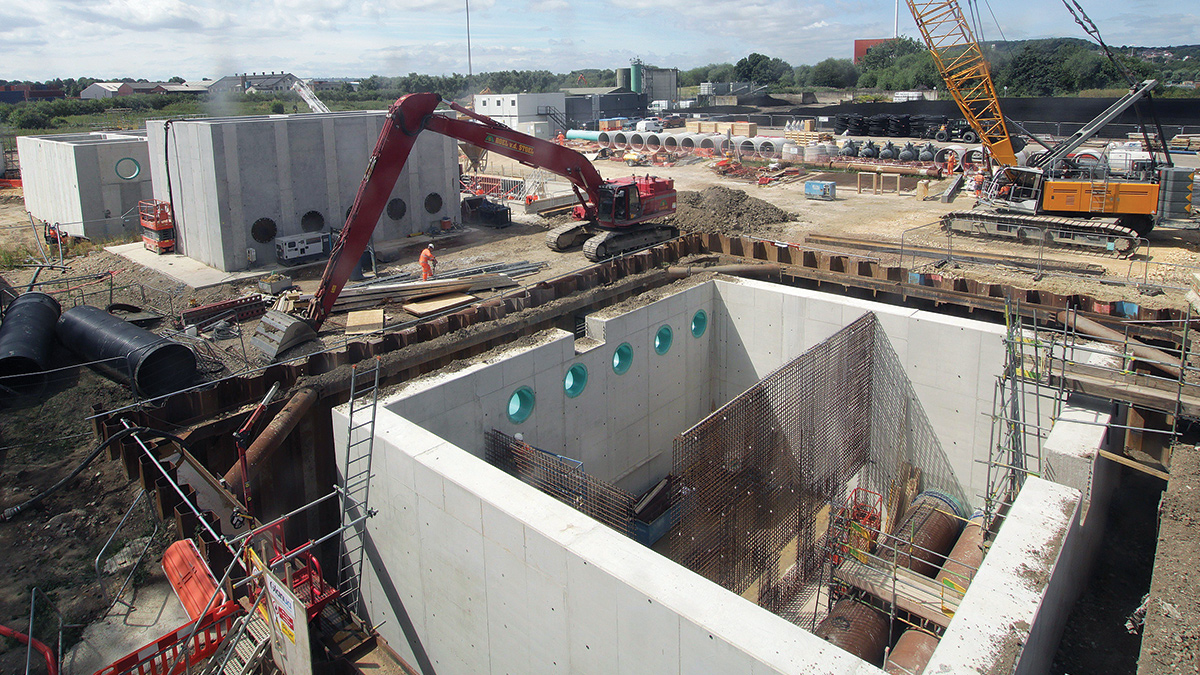
Construction progress of TSR pumping station – Courtesy of Glanua Group
Carbon reduction
The use of precast concrete resulted in a CO2 saving of 137.2 tonnes compared to an in situ concrete solution. This was calculated as the equivalent of not driving for over 1.1 million kilometres, or the carbon absorbed by 3430 trees.
Glanua Group has also reviewed a number of general concrete structures and taken a generative design approach when assessing the design to ensure the most effective solution is provided. For example, the proposed perimeter wall was changed from a design containing 0.80m3 of concrete per linear metre to 0.16m3 per linear metre, an 80% saving. Considering the perimeter of the site, this showed that even the smallest change can yield a great impact.
Glanua also looked to re-utilise all excavated materials and have a zero-import strategy to provide a low carbon solution to the reuse of all on-site materials. The ground profile of certain areas of the site were redesigned to eliminate metalwork structures and provide a greener solution for access and maintenance of plant and equipment.
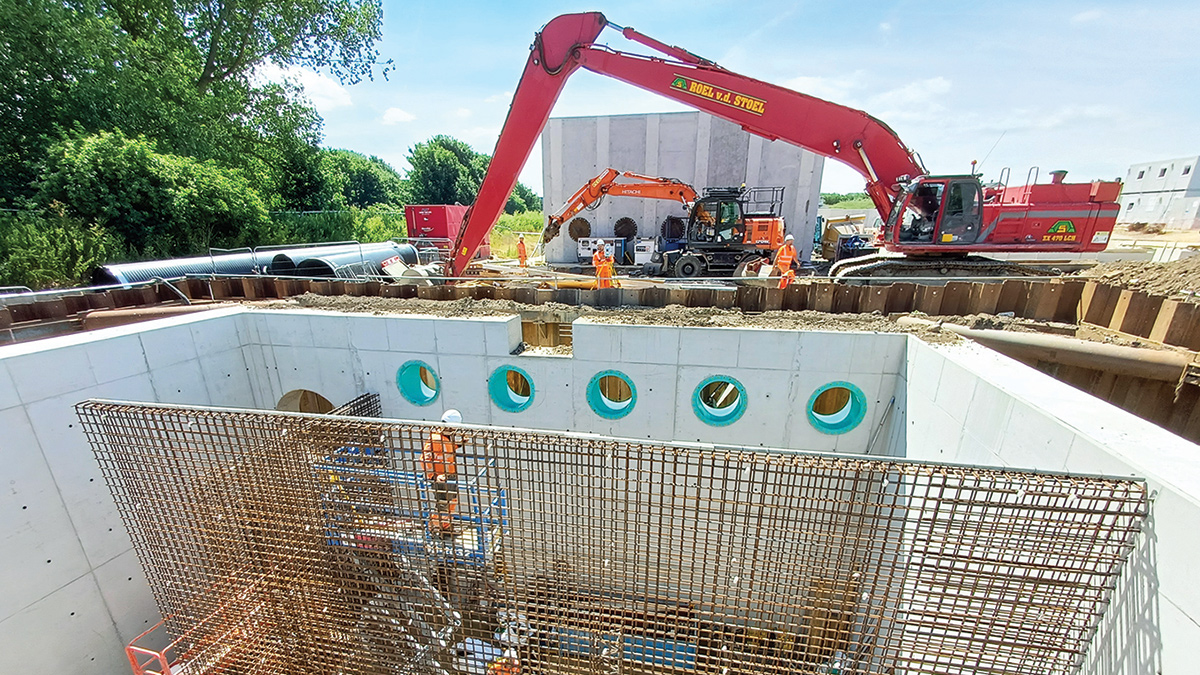
TSR pumping station structure construction – Courtesy of Glanua Group
Summary
Whilst significant progress has been made, there is still a lot of work to undertake to complete the project and comply with the beneficial completion date, including completion of civil works, mechanical and electrical installation and wet and dry commissioning.
Along with the adoption of the Evoqua Water Technologies CoMag® ballast process technology, a sustainable solution, the project has also achieved significant carbon savings of 137.2 tonnes. Additionally, the project has adopted a zero-import strategy, reusing all excavated materials on-site, reducing the need for additional materials and minimising the environmental footprint.
The project’s use of BIM and 4D technology further optimises construction processes, improve the sequencing of activities, achieving greater efficiency, accuracy, and project planning.












